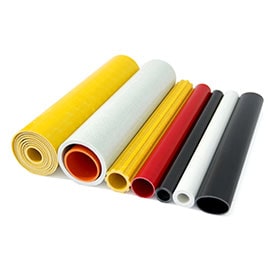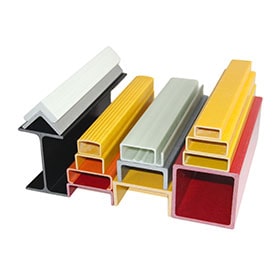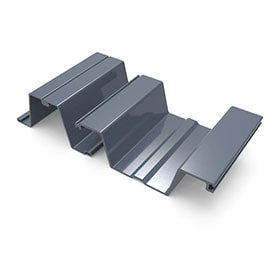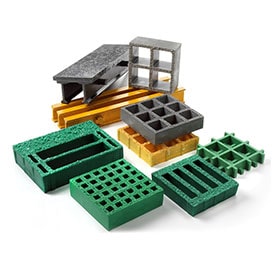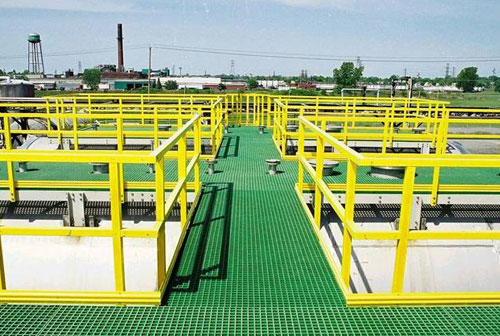
FRP walkways used in offshore platforms
In the realm of construction and engineering, FRP walkways have emerged as a prominent choice for pedestrian and industrial applications. But what exactly is an FRP walkway, and what sets it apart from traditional walkway materials? Let's unravel the full form of FRP walkway and delve into its unique characteristics and benefits.
Understanding FRP Walkways:
FRP, an acronym for Fiberglass Reinforced Plastic, is a composite material renowned for its strength, durability, and corrosion resistance. FRP walkways are essentially elevated platforms or pathways constructed using FRP grating panels. These panels consist of a grid-like structure of FRP bars, providing a sturdy and slip-resistant surface for pedestrian and industrial traffic.
Applications of FRP Walkways:
The versatility of FRP walkways extends across a wide spectrum of applications, including:
1- Industrial Walkways: FRP walkways are widely used in industrial settings, providing safe and stable access for workers in factories, power plants, and other industrial facilities.
2- Offshore Platforms: In the harsh marine environment of offshore platforms, FRP walkways offer exceptional resistance to corrosion and weathering, ensuring long-lasting performance.
3- Wastewater Treatment Plants: The corrosive nature of wastewater treatment plants makes FRP walkways an ideal choice, as they can withstand exposure to harsh chemicals and acidic environments.
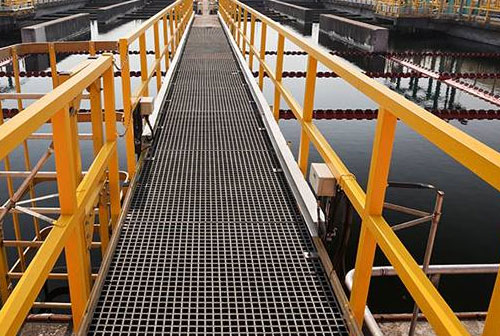
FRP walkways used in wastewater treatment plants
4- Food and Beverage Facilities: In the hygiene-critical food and beverage industry, FRP walkways provide a non-porous and easy-to-clean surface, promoting sanitation and preventing contamination.
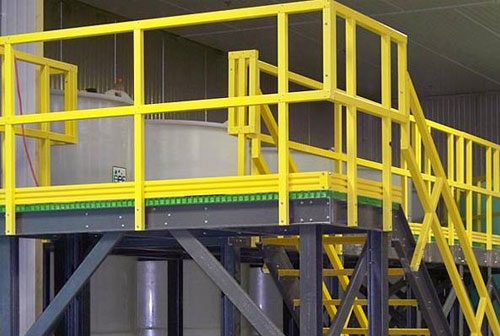
FRP walkways used in food and beverage facilities
5- Commercial Buildings: FRP walkways are increasingly being employed in commercial buildings, offering a combination of safety, aesthetics, and low maintenance.
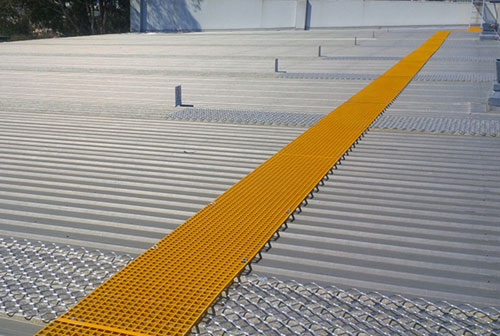
FRP walkways used in commercial buildings
Benefits of FRP Walkways:
1- Durability and Corrosion Resistance: FRP walkways are exceptionally durable and resistant to corrosion, making them ideal for harsh environments where traditional materials may deteriorate.
2- Slip Resistance: The textured surface of FRP walkways provides excellent slip resistance, minimizing the risk of slips and falls, especially in wet or oily conditions.
3- Low Maintenance: FRP walkways require minimal maintenance, reducing the need for frequent repairs and replacements, saving time and resources.
4- Lightweight: FRP walkways are significantly lighter than traditional metal walkways, making them easier to install and transport.
5- Electrical Insulation: FRP walkways are electrically non-conductive, providing safety in areas with potential electrical hazards.
Conclusion:
FRP walkways have revolutionized the construction of safe, durable, and low-maintenance elevated platforms. Their versatility and unique properties make them an ideal choice for a wide range of applications, from industrial settings to commercial buildings. As the demand for sustainable and long-lasting infrastructure grows, FRP walkways are poised to play an increasingly prominent role in shaping the future of walkways.
 +86 15303735673
+86 15303735673 Jessica@frpzs.com
Jessica@frpzs.com
 Technical Data
Technical Data


